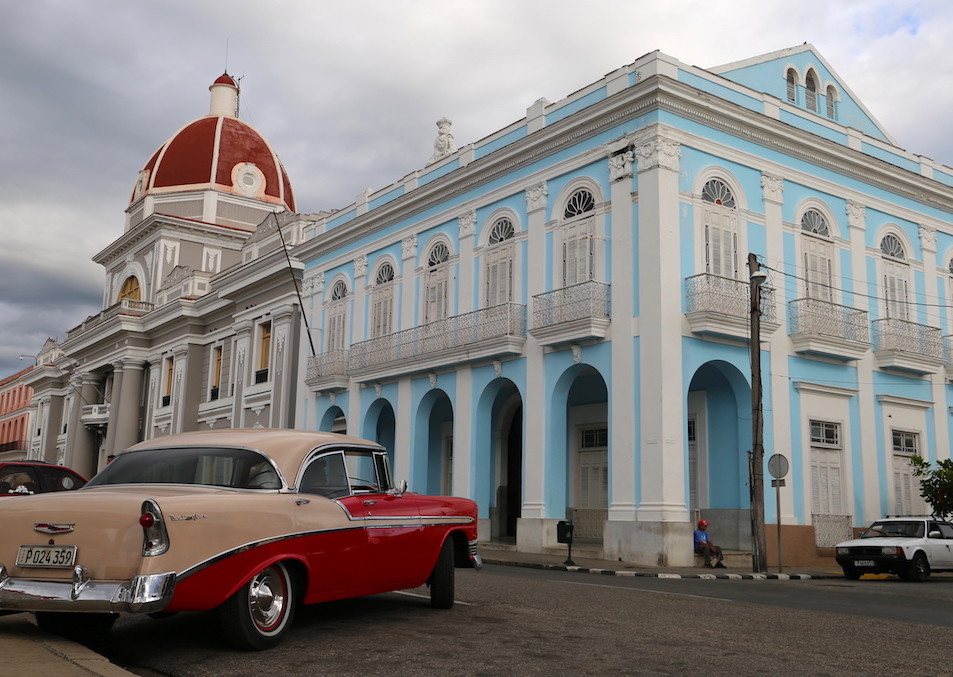
A time warped country that’s a contradictory mix of neglect and beauty. Everything a bloody postcard. It’s no surprise that Cuba holds a fascination for travellers.
I’ve just wrapped up a seven-day holiday in Cuba and had the most incredible time. But, the Caribbean island isn’t a travel destination where you can jump on a plane without any prep – it’s a complicated place that can do your head in (if you let it).
If you’ve never been, here are 15 things you should know about travelling to Cuba (or so I’ve learnt):
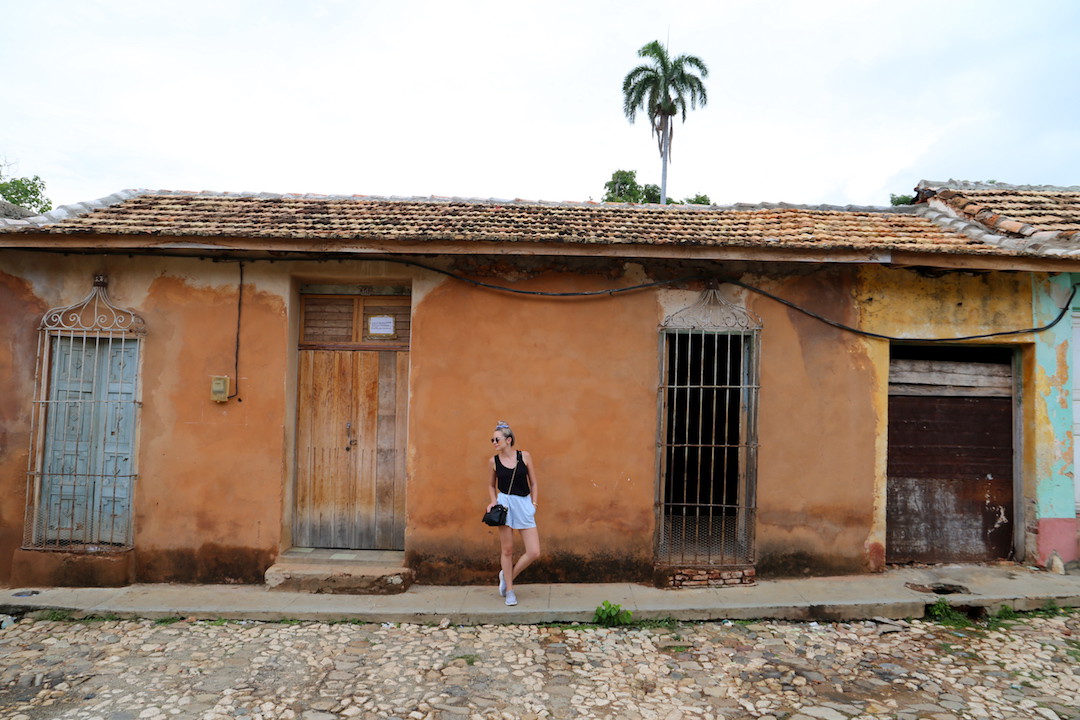
Strolling the streets of Trinidad with a fading tan
1. Accessing money in Cuba
Organising finance was probably the area I was most stressed about in the lead up to our trip. This is because you can’t get your hands on Cuban money outside of Cuba, and American credit cards won’t work once inside Cuba (and for whatever reason Westpac falls under that US umbrella).
I had these dramatic visions of Jude and I being stuck in Cuba without any money, or being robbed and not able to access funds – fortunately, none of this transpired.
What I now know is that, if you’re prepared, getting Cuban money is pretty easy once on the ground. At Havana’s Jose Marti Airport, there’s an official CADECA (money exchange). You’ll need to have Canadian Dollars, British Pounds or Euros ready to hand over – American Dollars attract an additional 10% fee and Australian Dollars aren’t recognised. Make sure you ask for lots of small notes – it’s a small change economy.
We brought with us 900 Euros for seven days (keeping in mind we were on a tour, with accommodation, transport and some meals paid for). This converted to 1060 CUCs, which was definitely enough money for an extravagant week. But, hey, we also didn’t want to run out and have to try our luck with the ATMs or sell our shoes. (Although we did have a back-up ING debit card with $2000 on it in case of an emergency).
At the end of the seven days we had 410 CUCs leftover, which we most definitely exchanged back to Euros at the airport – CUCs outside of Cuba have the same value as Monopoly money. Maybe less because you can’t buy Park Lane with it.
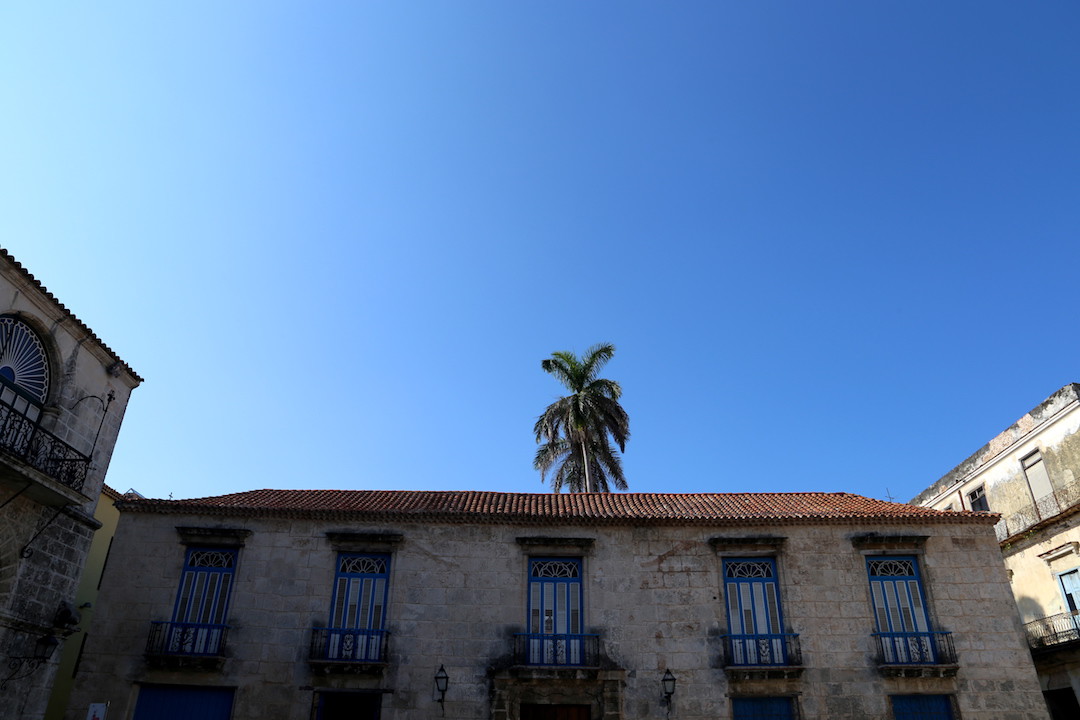
Havana, you heart-stealer!
2. Cuba has two currencies
To make money matters even more confusing, Cuba has two currencies and they’re both called pesos: convertible pesos (CUC) and Cuban pesos or moneda nacional pesos (CUP or MN). As a tourist you’ll deal pretty much exclusively in CUCs (pronounced ‘cooks’), and you don’t want to get the two mixed up as their value is very different.
Of course, CUCs and CUPs look very similar to the unsuspecting tourist eye. The way to tell them apart? CUC notes have images of monuments on them, while CUPs have images of people.
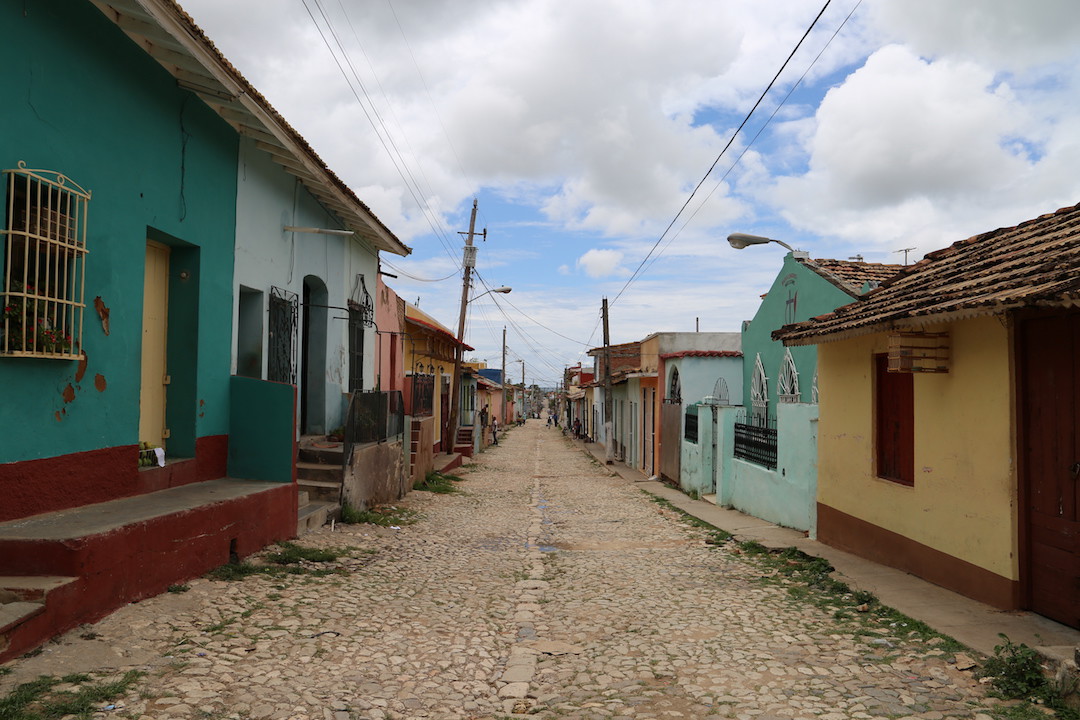
Regretting packing those 4000 pairs of stilettos
3. Tipping in Cuba
Expect to tip for just about everything. Restaurant service (10%), taxis (10%), restaurant musicians and street performers (1–3 CUCs), tour guides (2 CUCs per day) and toilets (0.25 CUC paid to the attendant).
Roaming the streets of Havana you’ll also find ‘characters’ dressed up in costume ready to lift the calibre of your Cuban photos – you just need to tip them 1 CUC. If you want to take a photo of a local it’s polite to tip them also.

A vintage car in Trinidad. So clichéd.
4. How to get a Cuban Tourist Visa
The other thing that caused us great angst pre-trip was how to get our mitts on a Cuban Tourist Visa. This is partially because our travel agent told us the only way was to present in person at the Cuban Embassy in Canberra and pay $60 AUD each. Hang on. What! Surely not.
Doing some keyboard research myself, I discovered you could get your visa at Mexico City Airport for 360 Mexican Pesos ($20 AUD) before boarding your flight to Havana. But after contemplating a road trip to Canberra that just seemed way too easy…
Huzzah, it was that easy! Paid for our tourist card at the Aero Mexico check-in counter at Mexico City Airport, filled it in and we were good to go! Thank Che we didn’t both take a day off work and unnecessarily drive to the capital.
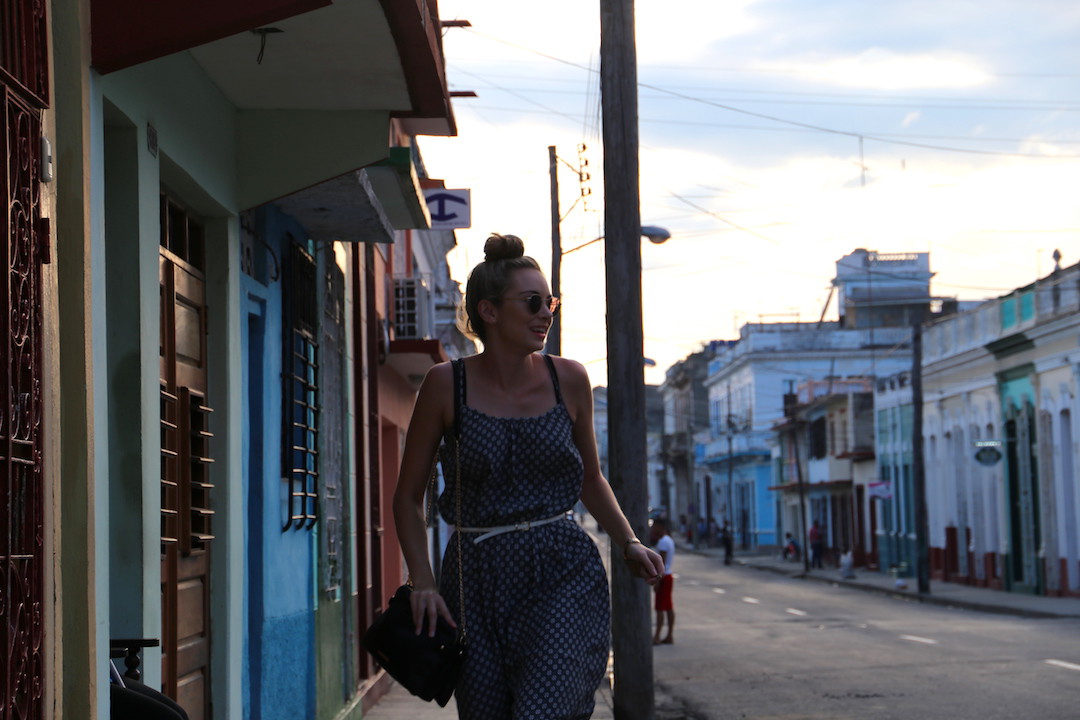
Running through the streets of Cienfuegos because it doesn’t matter what city I’m in, I’m always late
5. What to pack
Pack everything. Well everything you might need during your stay in Cuba because there’s no guarantee you’ll be able to buy it once there.
Probably one of the most eye-opening experiences I had in Cuba was while waiting at the baggage carousel and seeing the sheer amount of ‘stuff’ locals were bringing back from abroad. Cruising down the conveyor belt were car tyres and shrink-wrapped package after shrink-wrapped package of everyday items clearly difficult to source on the island.
This means bring all toiletries – shampoo, toothpaste, deodorant, tampons and soap. Bring medicines – pain killers, hayfever tablets (you’ll need these) and Imodium (unfortunately, you might need these too). Bring snacks.
I also packed several rolls of toilet paper, which bless its cotton ply came in very handy. I recommend having a wad on you at all times – toilet paper in public toilets is a luxurious find. Other things we used plenty of are mosquito repellent, sunscreen and ear plugs – the roosters in Viñales are fucking loud.

6. The best time of year to visit
March – it’s not too hot and not peak tourist season. At least that’s the word on the street.
7. How safe is Cuba?
Before visiting Cuba I was warned of the high petty theft rate, including having your suitcase strip-searched while you’re away from your guesthouse.
So I came fully prepared with no valuables (the engagement ring was left with the bank) and I locked my suitcase every time we left our casa particular (guesthouse), sometimes even bike locking it to the bed. In the seven days I was there I never had anything stolen, but I’m undecided whether this was because of my over-the-top security measures, the fact I was travelling with a big bloke and on a formal tour, or whether guesthouses are safer than you think…
Walking the streets of Havana and Trinidad felt very safe; everyone very friendly. I was never hassled, saw no homelessness and experienced very little begging (unlike the three weeks I spent in the United States afterwards). Cuba certainly wasn’t the gun-slinging Wild West that Jude had in his head.
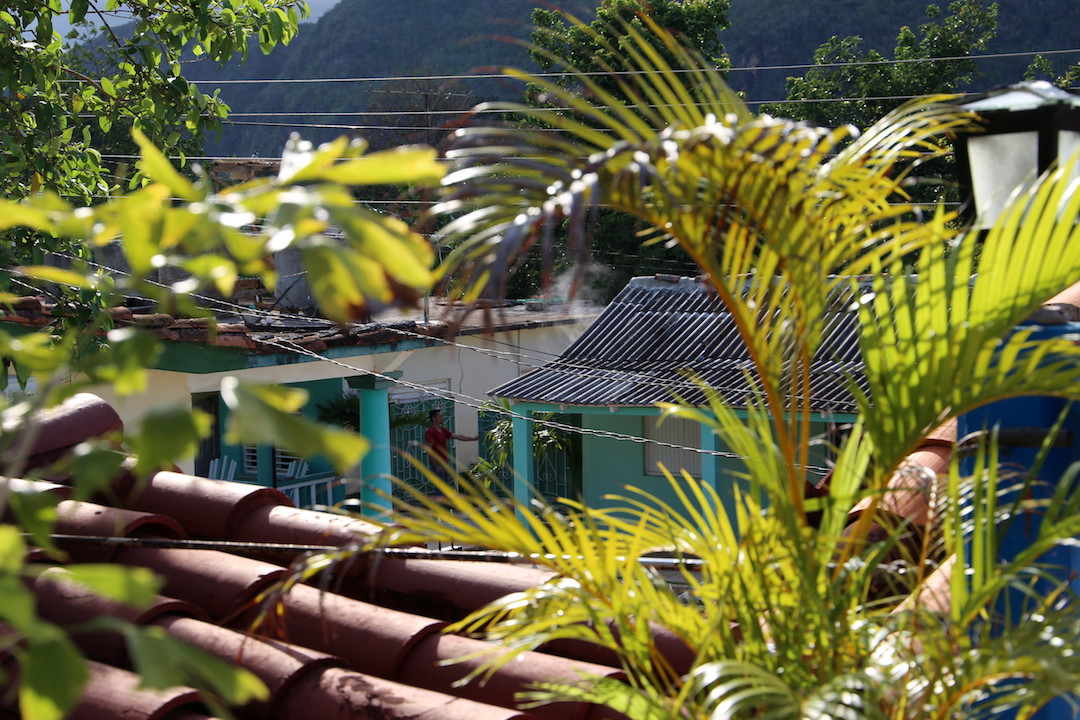
Spying on neighbours in Viñales
8. Be aware of tourist scams
While it may not be the Wild West, that doesn’t mean there aren’t plenty of scams trying to trap tourists. Common ones are the street peddling of fake cigars, hustlers escorting you into restaurants (for a commission that’s added to your bill) and being given change in CUP not CUC.
Advice: always agree on taxi fares before you get in, never exchange money on the street (even if the rates look good) and check your restaurant receipts.
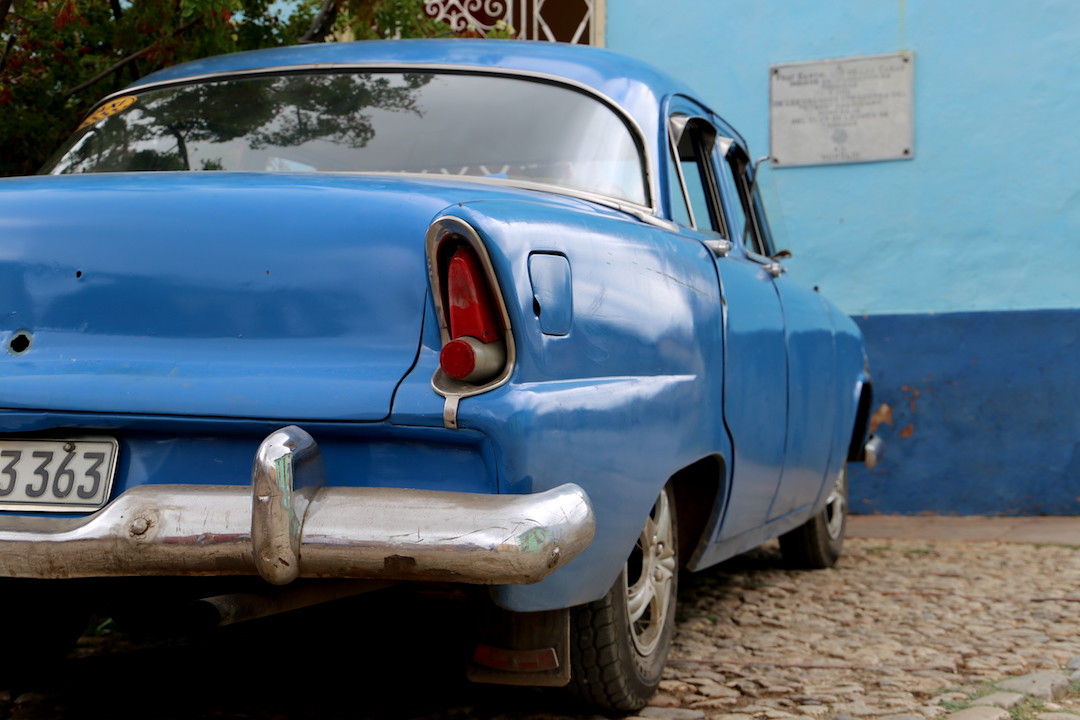
ANOTHER vintage car in Trinidad
9. Get ready to drink rum like a pirate
Yep, with cocktails costing approx. 3 CUC (that’s $3 USD) you’re set for a starring role in the next Pirates of the Caribbean. Even on days when you wake up intending to have an alcohol-free day, at some point you’ll find a mojito in your hand. How did that happen?
Rum (or Vitamin R as it’s called in Cuba) is so cheap that when ordering drinks you’re given the bottle and can free pour as little or as much alcohol as you like – a custom that confused the colada out of us the first day.
With a bottle of Havana Club Seleccion de Maestros Rum setting you back 10 CUCs (not the $89 AUD at Dan Murphy’s), you’re naturally going to want to bring as much Havana Club home with you as you can. Just don’t do what we did and pre-purchase your duty-free allocation (2.25 litres per person) at Sydney Airport before you leave the country. Fools!

Drink up!
10. Where to buy Cuban cigars
Cuban cigars are also ridiculously cheap. Given you can purchase Montecristos for around 10 CUCs each, you’re definitely going to want to stuff some of these in your luggage – and if you don’t, your mates do. Although, don’t go too crazy – you can only bring 25 grams of cigars duty-free back into Australia.
And, to my earlier point, only buy cigars from the official La Casa Del Habanos stores or from the tobacco plantations in Viñales – unless you don’t mind a fake.
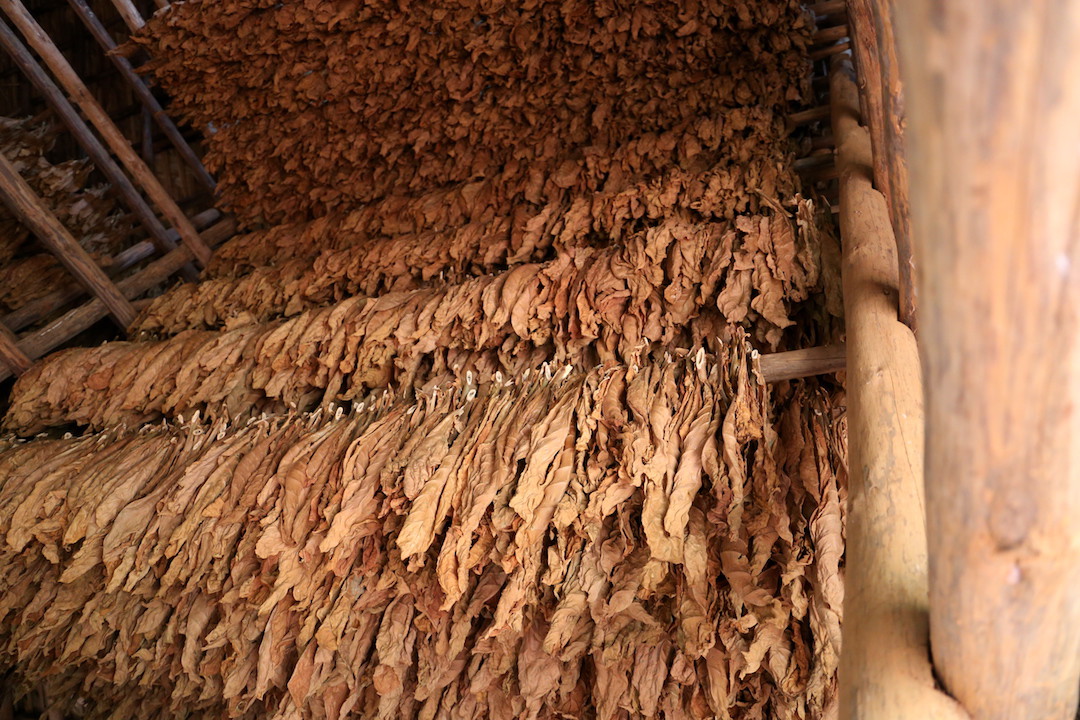
A whole lot of tobacco leaves inside a tobacco farm’s drying house in Viñales
11. The food scene in Cuba
When it comes to restaurants, if you don’t expect culinary (and service) wizardry you might be pleasantly surprised. Cuba’s food culture has transformed a lot in recent years, burgeoned by the political and economic reforms of 2011, encouraging private restaurants to set up kitchen – you want to avoid state-run restaurants.
Although the national menu no longer consists of rice and beans, restaurateurs still face limitations, including the accessibility of produce. During our week-long stay we had one really good meal – Lamparilla Tapas & Cervezas in Havana. Definitely one to try. Another one to try is the national dish of spicy shredded beef and add a side of plantain chips.
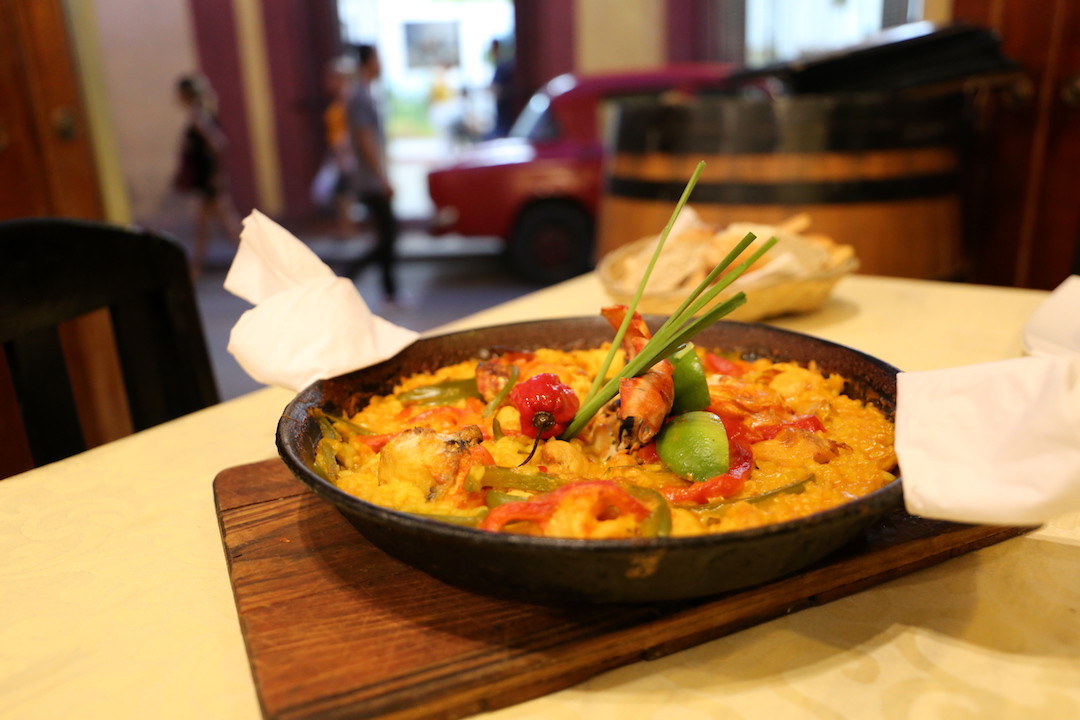
A seafood paella at El Rum Rum de la Habana, Havana
12. Don’t drink the water
Pretty consistent with any developing country, you can’t drink the tap water in Cuba. Unless you enjoy having the runs – then be my guest. Thankfully, bottled water is quite cheap (1–2 CUCs), but stock up when you can. One day we had to visit three different stores to find one that hadn’t sold out of water.
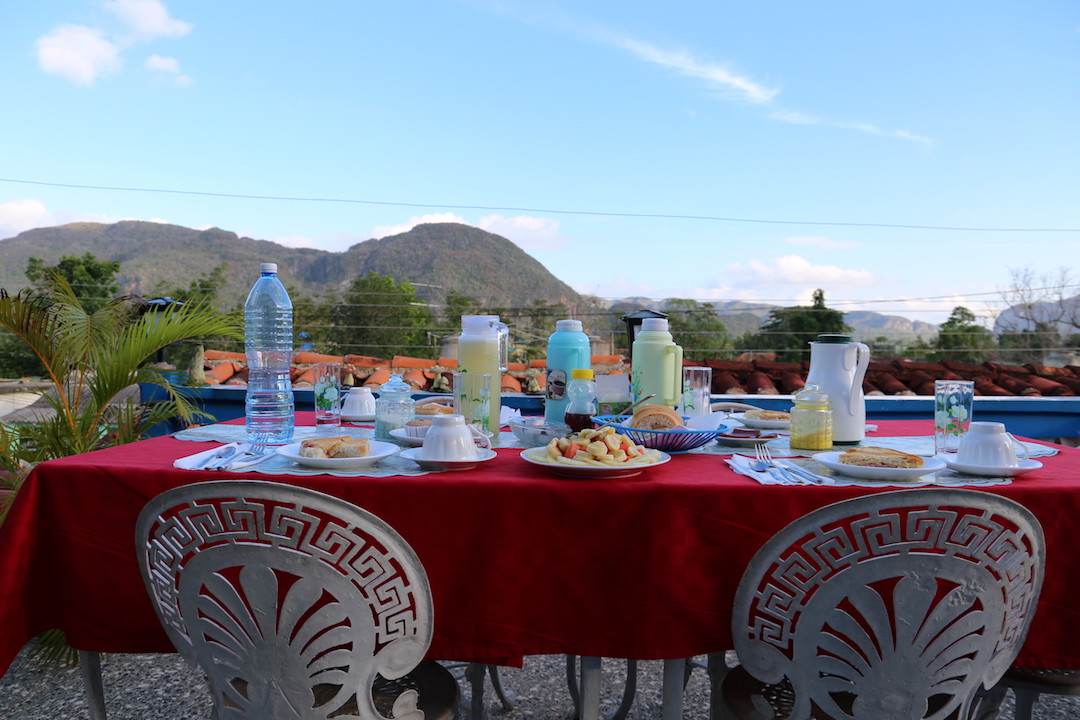
The breakfast served at our guesthouse in Viñales
13. Don’t flush the toilet paper
Also common throughout this part of the world, you can’t flush the toilet paper in Cuba. Instead the used bog roll needs to go in the bathroom bin. This blew the mind of one guy on our tour who kept asking every time we moved towns whether you could flush the toilet paper in this town. Uh, no. He couldn’t deal.
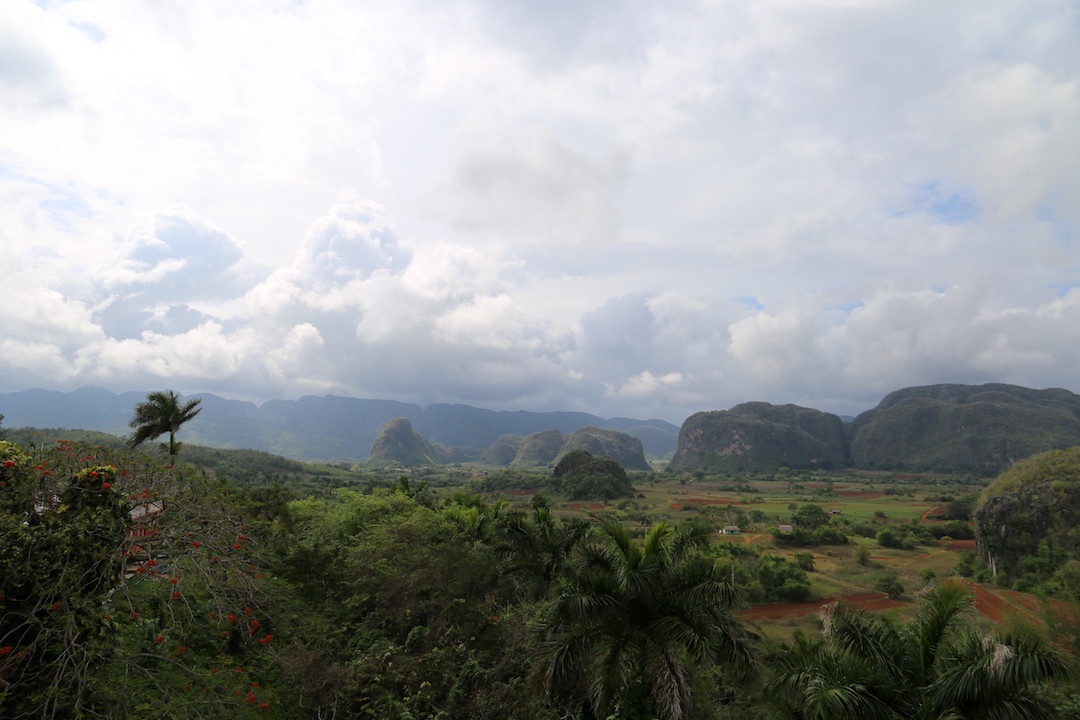
This view of Viñales Valley. Disgusting.
14. Accessing wi-fi in Cuba
I was actually quite excited about an enforced digital detox, so was a little disappointed to find wi-fi in Cuba more common than I expected. Although accessing it is like a game of murder mystery.
First, you have to find an ETECSA and join the (often-long) line to buy some wi-fi scratch cards (it’s 1 CUC for 1 hour). Then you have to identify where the public wi-fi hot spots are. There’s only a couple in each town. Finally, you scratch your code, jump online and navigate some seriously slow dial-up speeds.
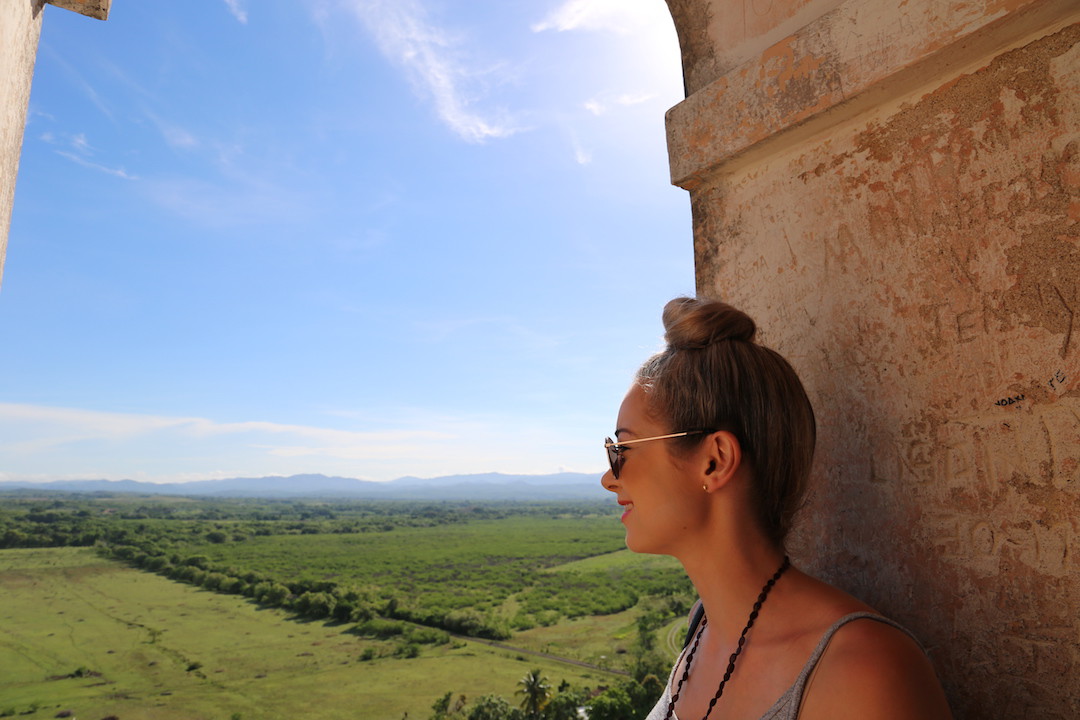
The view from Manaca Iznaga plantation near Trinidad
15. The time to visit Cuba is now
With the Fidel era over, the austere economic times of the 90s behind it and new laws allowing private enterprise to flourish, Cuba has awoken from a Snow White-esque sleep. The Cuba of today is very different to the Cuba of 10 years ago, and no doubt the Cuba of 10 years’ time. This means the time to visit this magical time warped country is now.
Oh! And do yourself a favour, learn some Spanish and download the Google Translate app (and make sure you download the offline Spanish translation file so it will work without wi-fi) – it will make your stay that much easier and more enjoyable.
